Thorsten Seehaus
SSL4SAR: Self-Supervised Learning for Glacier Calving Front Extraction from SAR Imagery
Jul 02, 2025Abstract:Glaciers are losing ice mass at unprecedented rates, increasing the need for accurate, year-round monitoring to understand frontal ablation, particularly the factors driving the calving process. Deep learning models can extract calving front positions from Synthetic Aperture Radar imagery to track seasonal ice losses at the calving fronts of marine- and lake-terminating glaciers. The current state-of-the-art model relies on ImageNet-pretrained weights. However, they are suboptimal due to the domain shift between the natural images in ImageNet and the specialized characteristics of remote sensing imagery, in particular for Synthetic Aperture Radar imagery. To address this challenge, we propose two novel self-supervised multimodal pretraining techniques that leverage SSL4SAR, a new unlabeled dataset comprising 9,563 Sentinel-1 and 14 Sentinel-2 images of Arctic glaciers, with one optical image per glacier in the dataset. Additionally, we introduce a novel hybrid model architecture that combines a Swin Transformer encoder with a residual Convolutional Neural Network (CNN) decoder. When pretrained on SSL4SAR, this model achieves a mean distance error of 293 m on the "CAlving Fronts and where to Find thEm" (CaFFe) benchmark dataset, outperforming the prior best model by 67 m. Evaluating an ensemble of the proposed model on a multi-annotator study of the benchmark dataset reveals a mean distance error of 75 m, approaching the human performance of 38 m. This advancement enables precise monitoring of seasonal changes in glacier calving fronts.
Comparison Study: Glacier Calving Front Delineation in Synthetic Aperture Radar Images With Deep Learning
Jan 09, 2025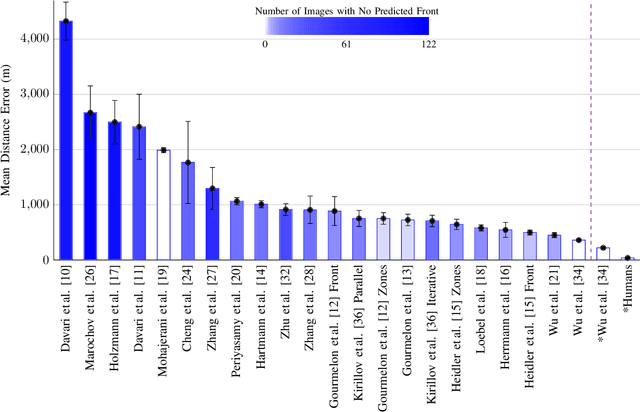
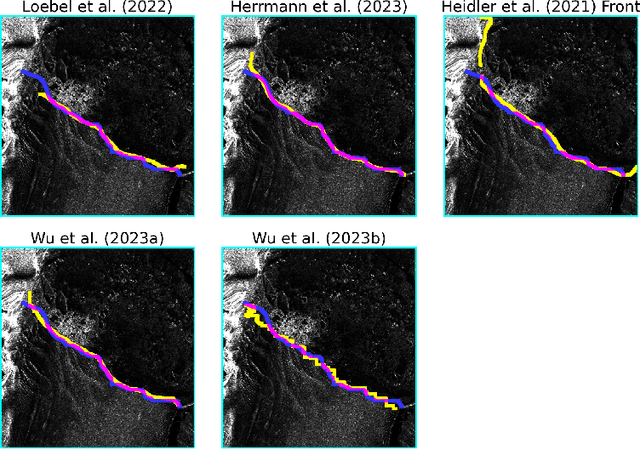
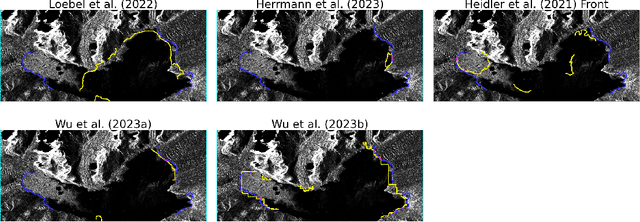
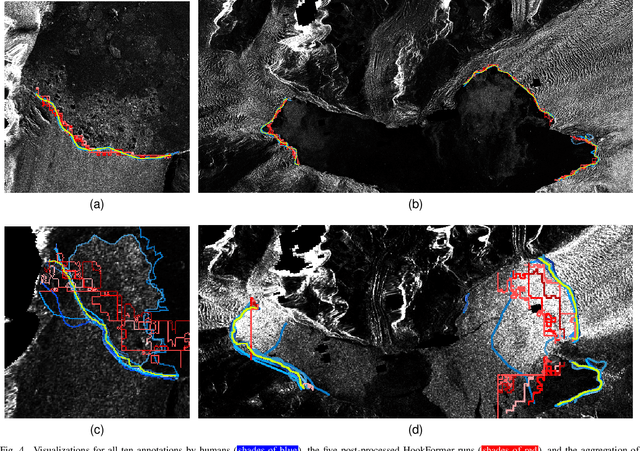
Abstract:Calving front position variation of marine-terminating glaciers is an indicator of ice mass loss and a crucial parameter in numerical glacier models. Deep Learning (DL) systems can automatically extract this position from Synthetic Aperture Radar (SAR) imagery, enabling continuous, weather- and illumination-independent, large-scale monitoring. This study presents the first comparison of DL systems on a common calving front benchmark dataset. A multi-annotator study with ten annotators is performed to contrast the best-performing DL system against human performance. The best DL model's outputs deviate 221 m on average, while the average deviation of the human annotators is 38 m. This significant difference shows that current DL systems do not yet match human performance and that further research is needed to enable fully automated monitoring of glacier calving fronts. The study of Vision Transformers, foundation models, and the inclusion and processing strategy of more information are identified as avenues for future research.
AMD-HookNet for Glacier Front Segmentation
Feb 06, 2023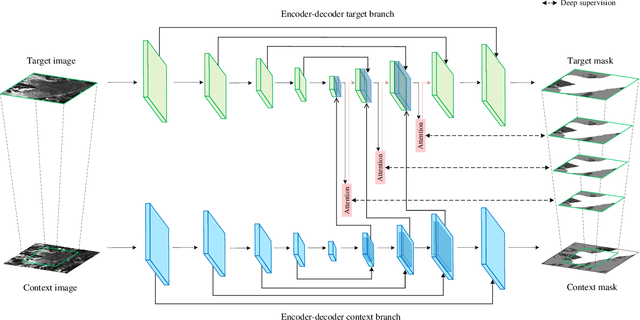
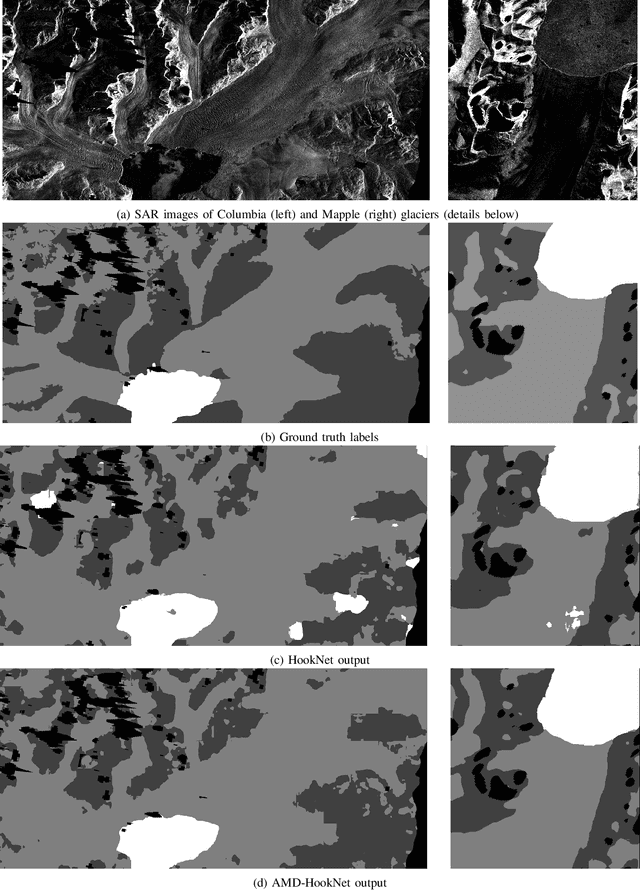
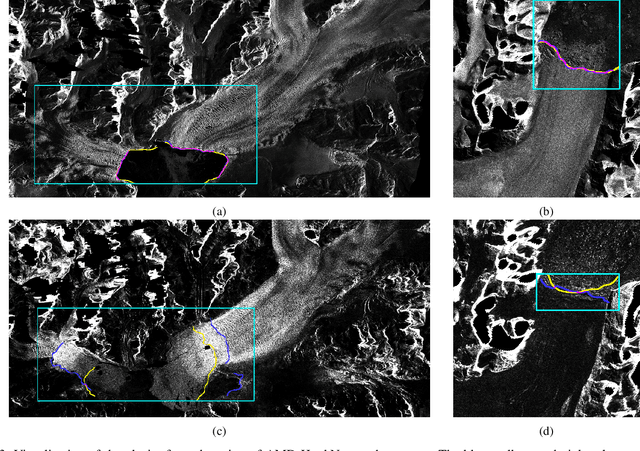
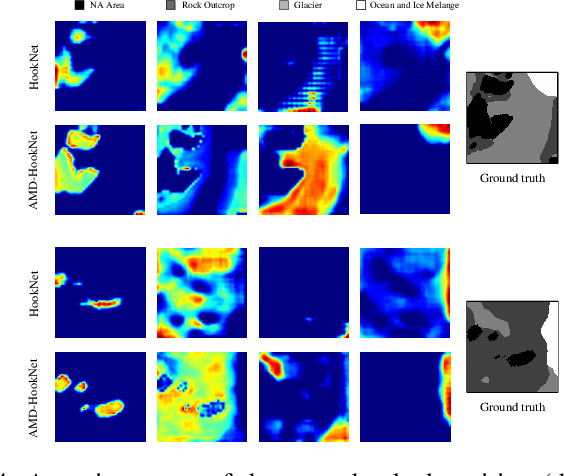
Abstract:Knowledge on changes in glacier calving front positions is important for assessing the status of glaciers. Remote sensing imagery provides the ideal database for monitoring calving front positions, however, it is not feasible to perform this task manually for all calving glaciers globally due to time-constraints. Deep learning-based methods have shown great potential for glacier calving front delineation from optical and radar satellite imagery. The calving front is represented as a single thin line between the ocean and the glacier, which makes the task vulnerable to inaccurate predictions. The limited availability of annotated glacier imagery leads to a lack of data diversity (not all possible combinations of different weather conditions, terminus shapes, sensors, etc. are present in the data), which exacerbates the difficulty of accurate segmentation. In this paper, we propose Attention-Multi-hooking-Deep-supervision HookNet (AMD-HookNet), a novel glacier calving front segmentation framework for synthetic aperture radar (SAR) images. The proposed method aims to enhance the feature representation capability through multiple information interactions between low-resolution and high-resolution inputs based on a two-branch U-Net. The attention mechanism, integrated into the two branch U-Net, aims to interact between the corresponding coarse and fine-grained feature maps. This allows the network to automatically adjust feature relationships, resulting in accurate pixel-classification predictions. Extensive experiments and comparisons on the challenging glacier segmentation benchmark dataset CaFFe show that our AMD-HookNet achieves a mean distance error of 438 m to the ground truth outperforming the current state of the art by 42%, which validates its effectiveness.
On Mathews Correlation Coefficient and Improved Distance Map Loss for Automatic Glacier Calving Front Segmentation in SAR Imagery
Mar 09, 2021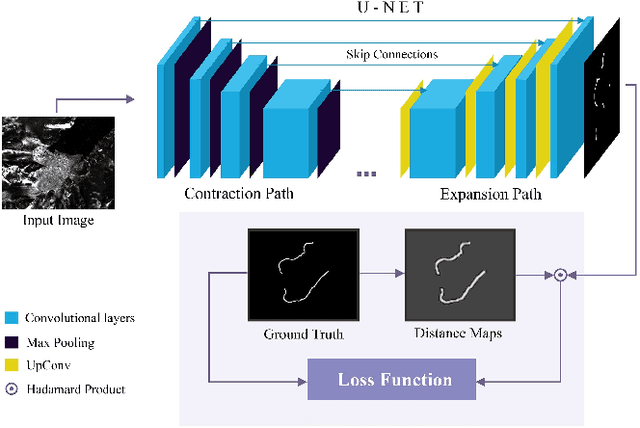
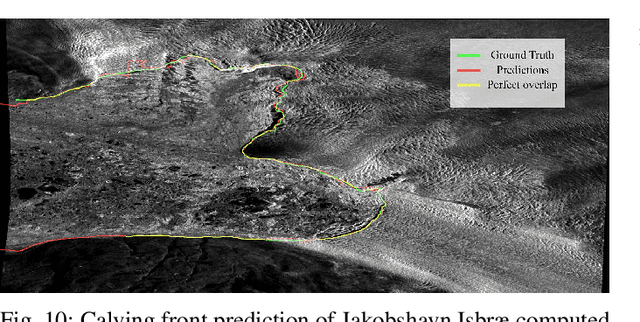
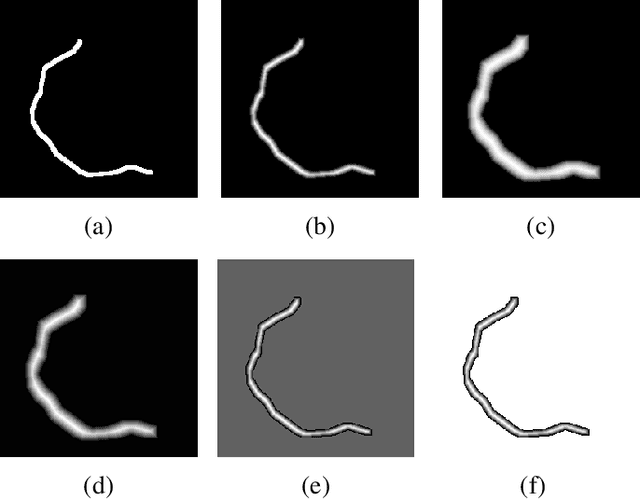
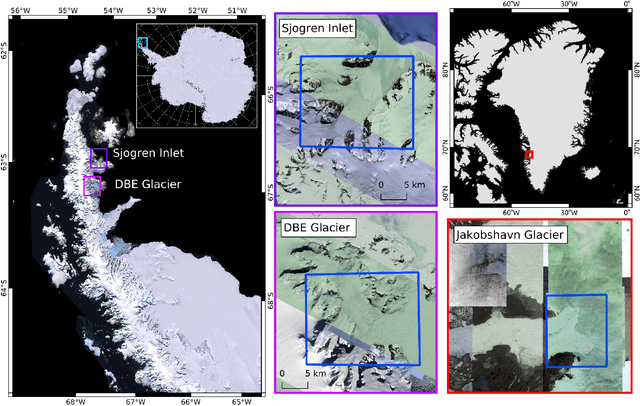
Abstract:The vast majority of the outlet glaciers and ice streams of the polar ice sheets end in the ocean. Ice mass loss via calving of the glaciers into the ocean has increased over the last few decades. Information on the temporal variability of the calving front position provides fundamental information on the state of the glacier and ice stream, which can be exploited as calibration and validation data to enhance ice dynamics modeling. To identify the calving front position automatically, deep neural network-based semantic segmentation pipelines can be used to delineate the acquired SAR imagery. However, the extreme class imbalance is highly challenging for the accurate calving front segmentation in these images. Therefore, we propose the use of the Mathews correlation coefficient (MCC) as an early stopping criterion because of its symmetrical properties and its invariance towards class imbalance. Moreover, we propose an improvement to the distance map-based binary cross-entropy (BCE) loss function. The distance map adds context to the loss function about the important regions for segmentation and helps accounting for the imbalanced data. Using Mathews correlation coefficient as early stopping demonstrates an average 15% dice coefficient improvement compared to the commonly used BCE. The modified distance map loss further improves the segmentation performance by another 2%. These results are encouraging as they support the effectiveness of the proposed methods for segmentation problems suffering from extreme class imbalances.
Pixel-wise Distance Regression for Glacier Calving Front Detection and Segmentation
Mar 09, 2021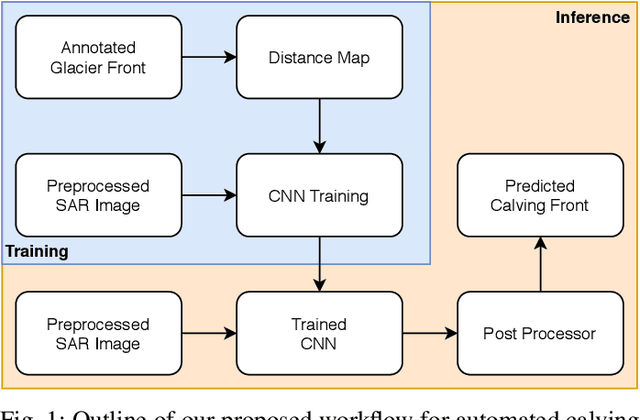
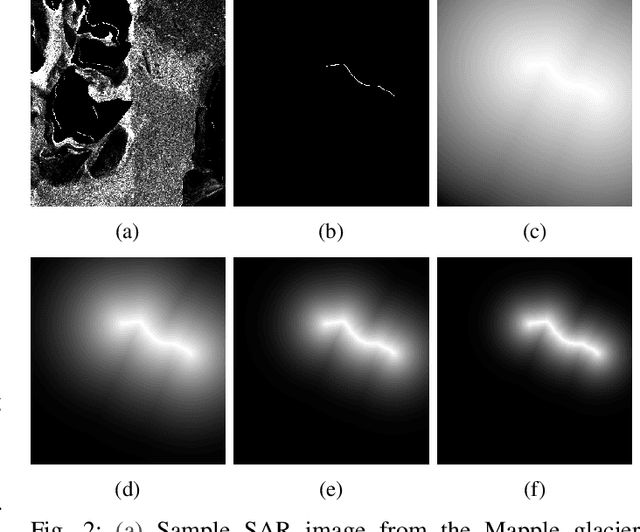
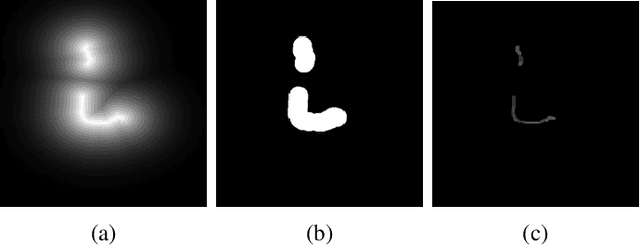
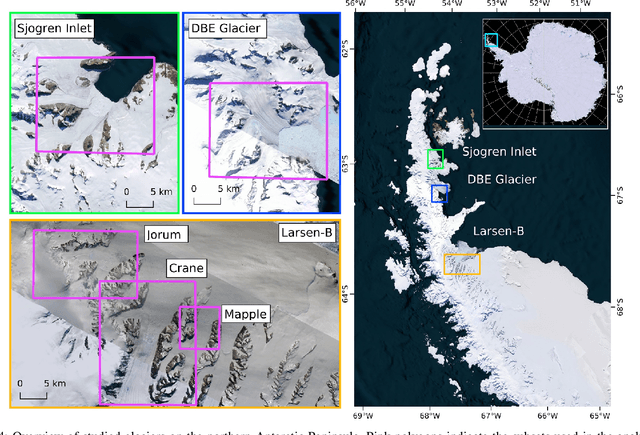
Abstract:Glacier calving front position (CFP) is an important glaciological variable. Traditionally, delineating the CFPs has been carried out manually, which was subjective, tedious and expensive. Automating this process is crucial for continuously monitoring the evolution and status of glaciers. Recently, deep learning approaches have been investigated for this application. However, the current methods get challenged by a severe class-imbalance problem. In this work, we propose to mitigate the class-imbalance between the calving front class and the non-calving front class by reformulating the segmentation problem into a pixel-wise regression task. A Convolutional Neural Network gets optimized to predict the distance values to the glacier front for each pixel in the image. The resulting distance map localizes the CFP and is further post-processed to extract the calving front line. We propose three post-processing methods, one method based on statistical thresholding, a second method based on conditional random fields (CRF), and finally the use of a second U-Net. The experimental results confirm that our approach significantly outperforms the state-of-the-art methods and produces accurate delineation. The Second U-Net obtains the best performance results, resulting in an average improvement of about 21% dice coefficient enhancement.
Synthetic Glacier SAR Image Generation from Arbitrary Masks Using Pix2Pix Algorithm
Jan 14, 2021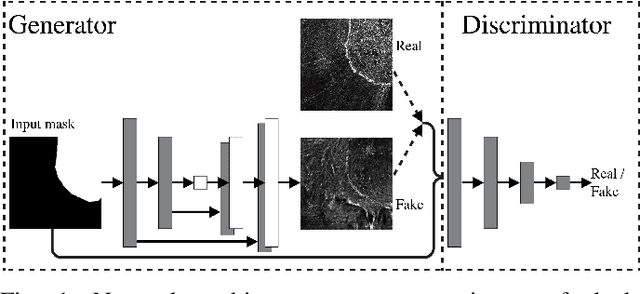
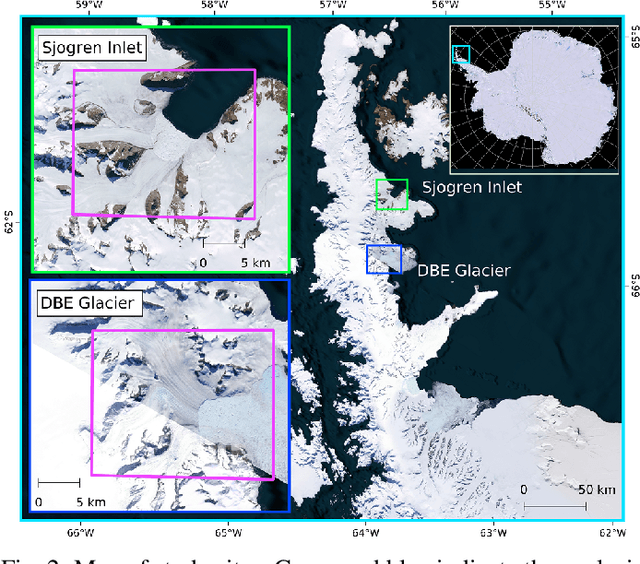
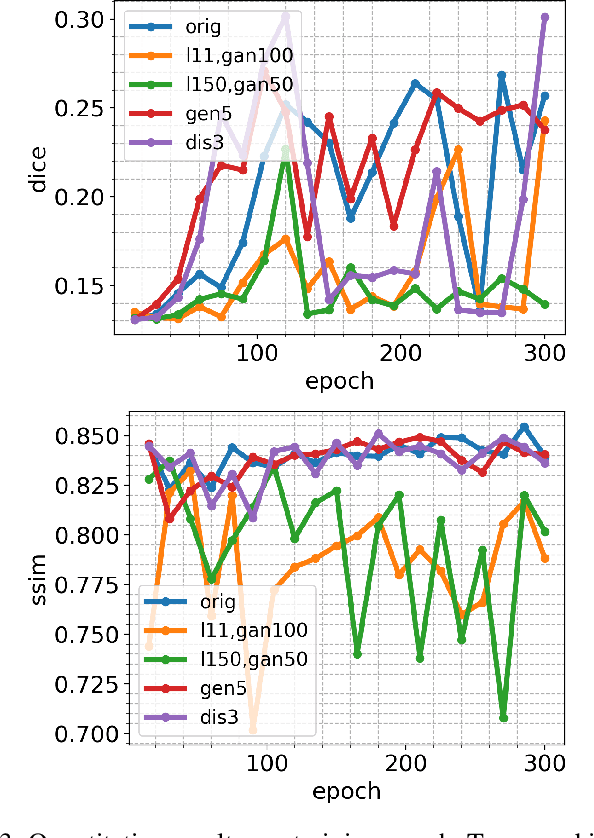
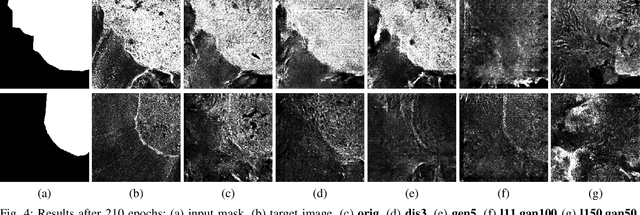
Abstract:Supervised machine learning requires a large amount of labeled data to achieve proper test results. However, generating accurately labeled segmentation maps on remote sensing imagery, including images from synthetic aperture radar (SAR), is tedious and highly subjective. In this work, we propose to alleviate the issue of limited training data by generating synthetic SAR images with the pix2pix algorithm. This algorithm uses conditional Generative Adversarial Networks (cGANs) to generate an artificial image while preserving the structure of the input. In our case, the input is a segmentation mask, from which a corresponding synthetic SAR image is generated. We present different models, perform a comparative study and demonstrate that this approach synthesizes convincing glaciers in SAR images with promising qualitative and quantitative results.
Bayesian U-Net for Segmenting Glaciers in SAR Imagery
Jan 08, 2021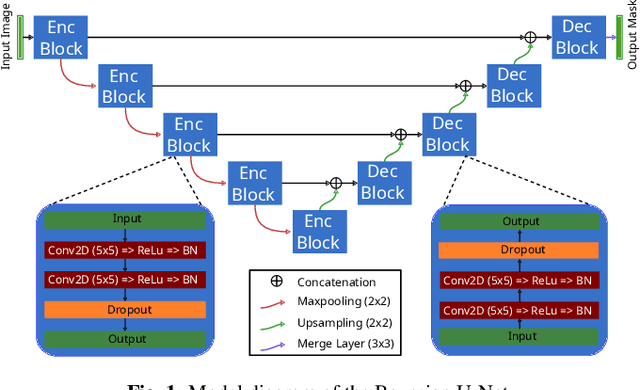
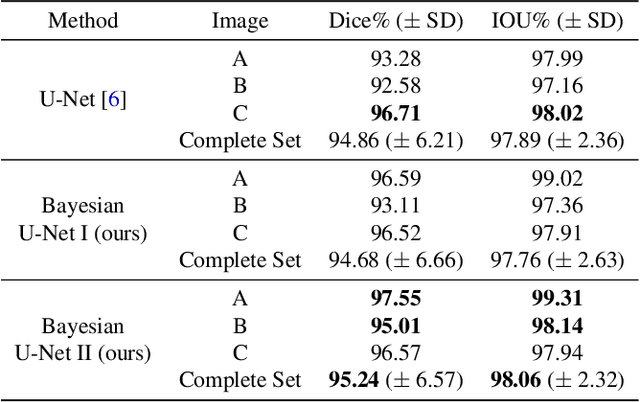
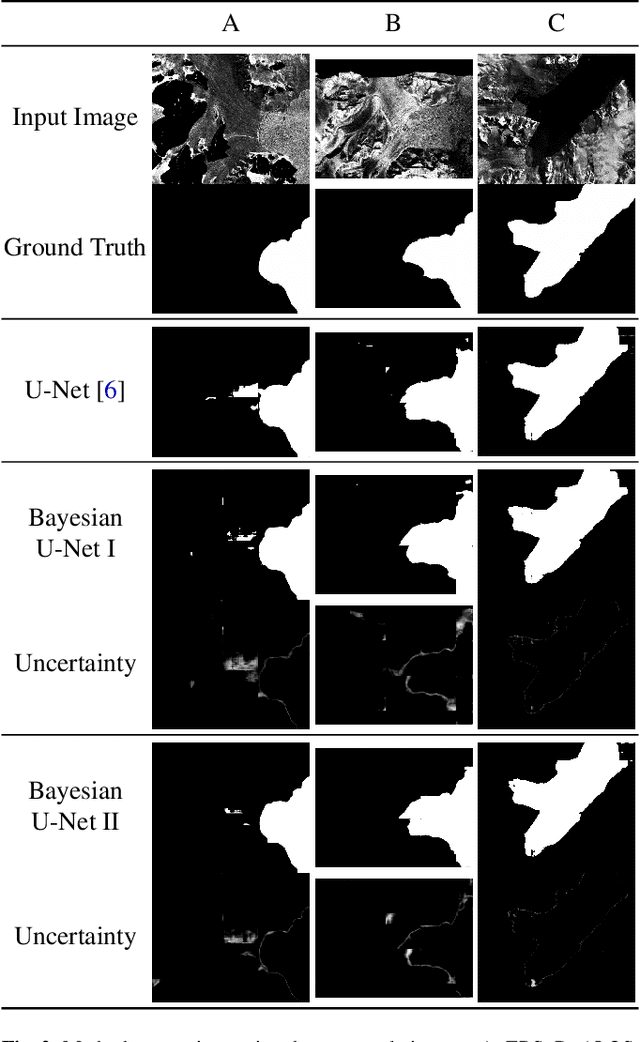
Abstract:Fluctuations of the glacier calving front have an important influence over the ice flow of whole glacier systems. It is therefore important to precisely monitor the position of the calving front. However, the manual delineation of SAR images is a difficult, laborious and subjective task. Convolutional neural networks have previously shown promising results in automating the glacier segmentation in SAR images, making them desirable for further exploration of their possibilities. In this work, we propose to compute uncertainty and use it in an Uncertainty Optimization regime as a novel two-stage process. By using dropout as a random sampling layer in a U-Net architecture, we create a probabilistic Bayesian Neural Network. With several forward passes, we create a sampling distribution, which can estimate the model uncertainty for each pixel in the segmentation mask. The additional uncertainty map information can serve as a guideline for the experts in the manual annotation of the data. Furthermore, feeding the uncertainty map to the network leads to 95.24% Dice similarity, which is an overall improvement in the segmentation performance compared to the state-of-the-art deterministic U-Net-based glacier segmentation pipelines.
Glacier Calving Front Segmentation Using Attention U-Net
Jan 08, 2021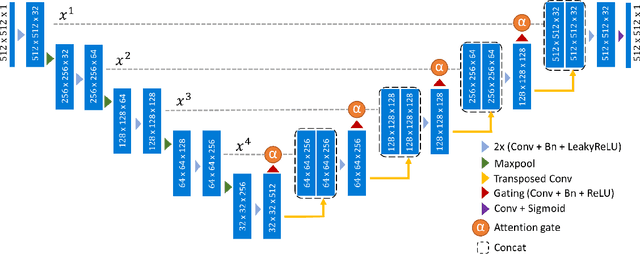

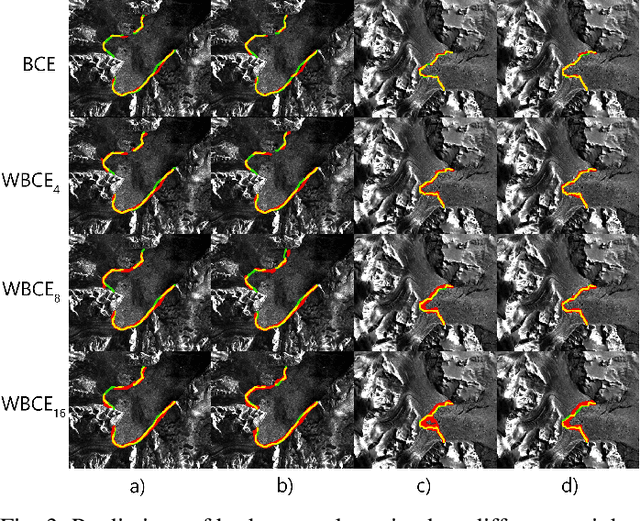
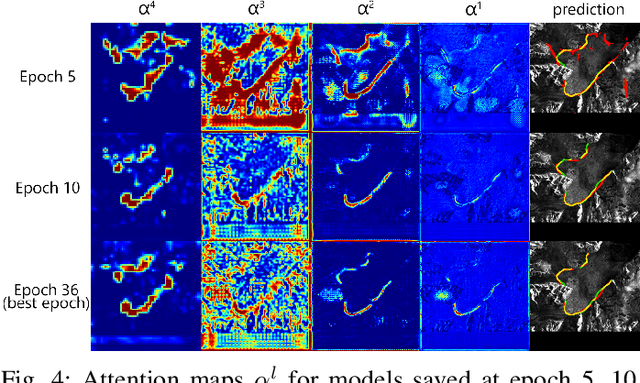
Abstract:An essential climate variable to determine the tidewater glacier status is the location of the calving front position and the separation of seasonal variability from long-term trends. Previous studies have proposed deep learning-based methods to semi-automatically delineate the calving fronts of tidewater glaciers. They used U-Net to segment the ice and non-ice regions and extracted the calving fronts in a post-processing step. In this work, we show a method to segment the glacier calving fronts from SAR images in an end-to-end fashion using Attention U-Net. The main objective is to investigate the attention mechanism in this application. Adding attention modules to the state-of-the-art U-Net network lets us analyze the learning process by extracting its attention maps. We use these maps as a tool to search for proper hyperparameters and loss functions in order to generate higher qualitative results. Our proposed attention U-Net performs comparably to the standard U-Net while providing additional insight into those regions on which the network learned to focus more. In the best case, the attention U-Net achieves a 1.5% better Dice score compared to the canonical U-Net with a glacier front line prediction certainty of up to 237.12 meters.
 Add to Chrome
Add to Chrome Add to Firefox
Add to Firefox Add to Edge
Add to Edge